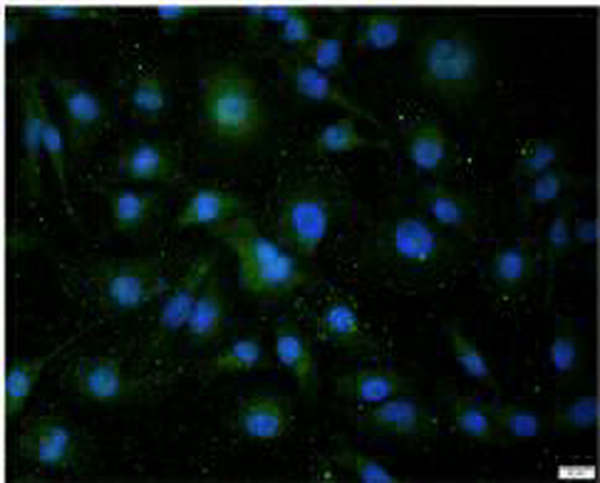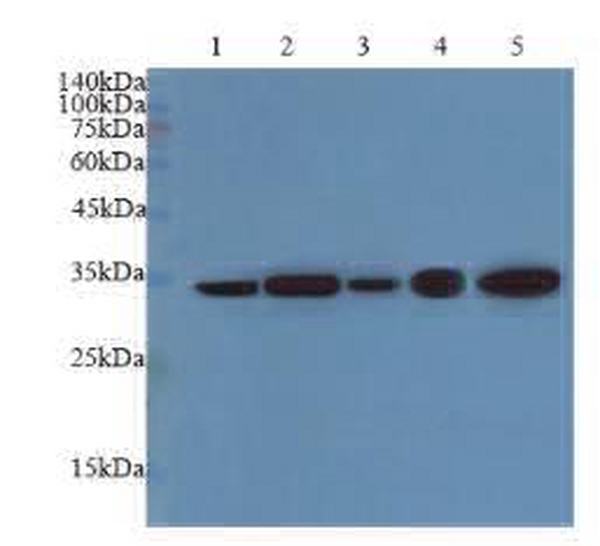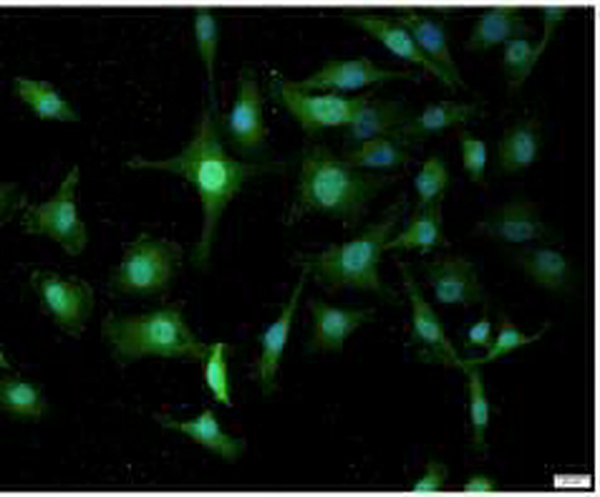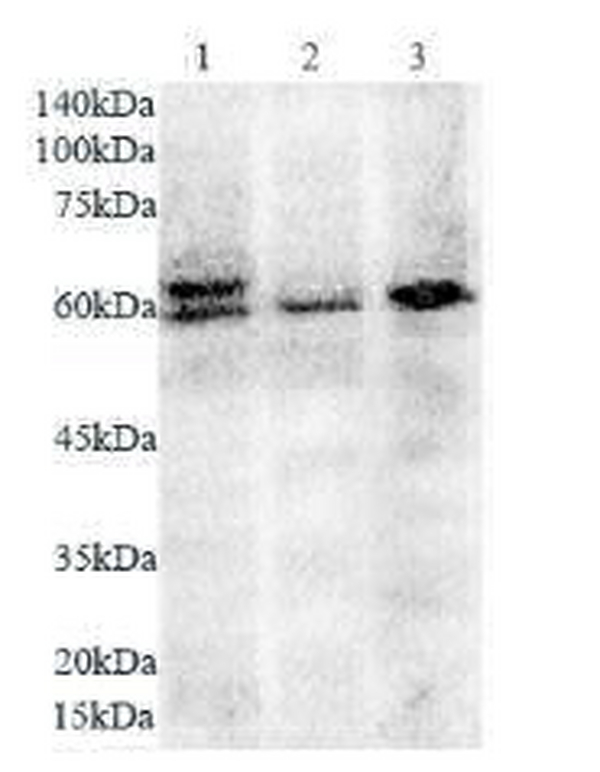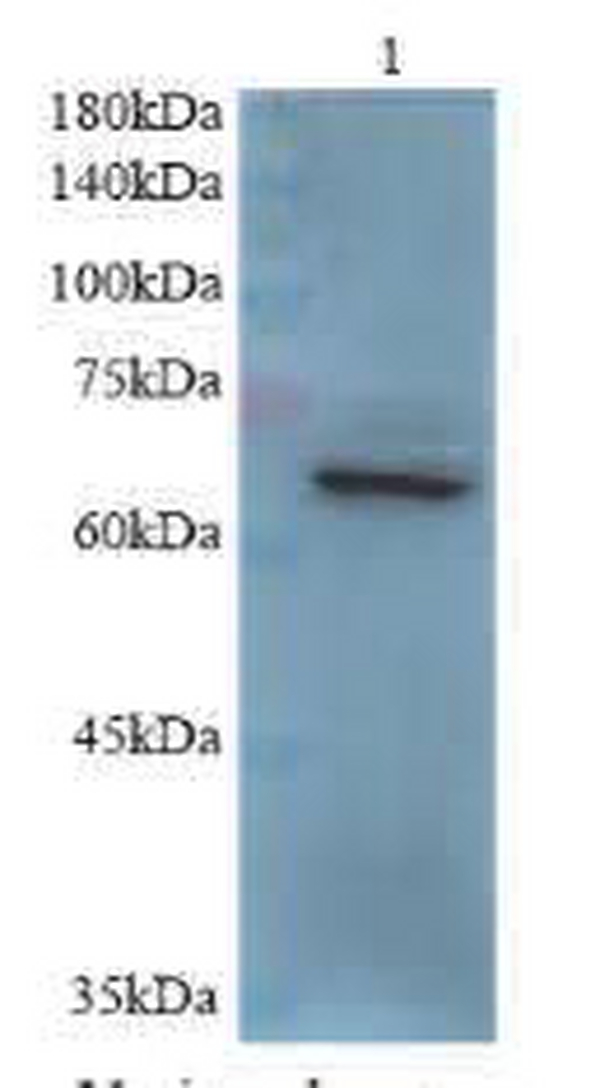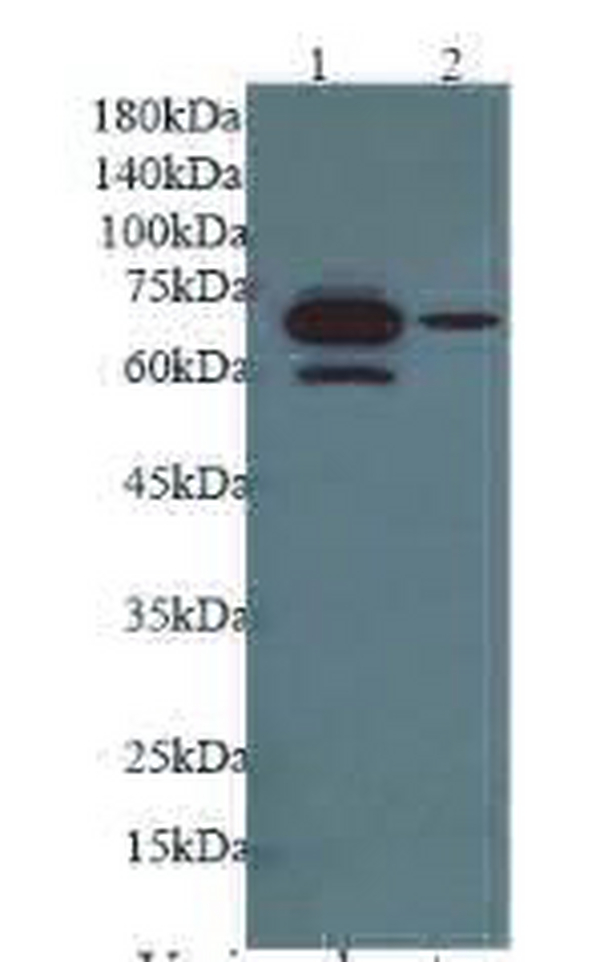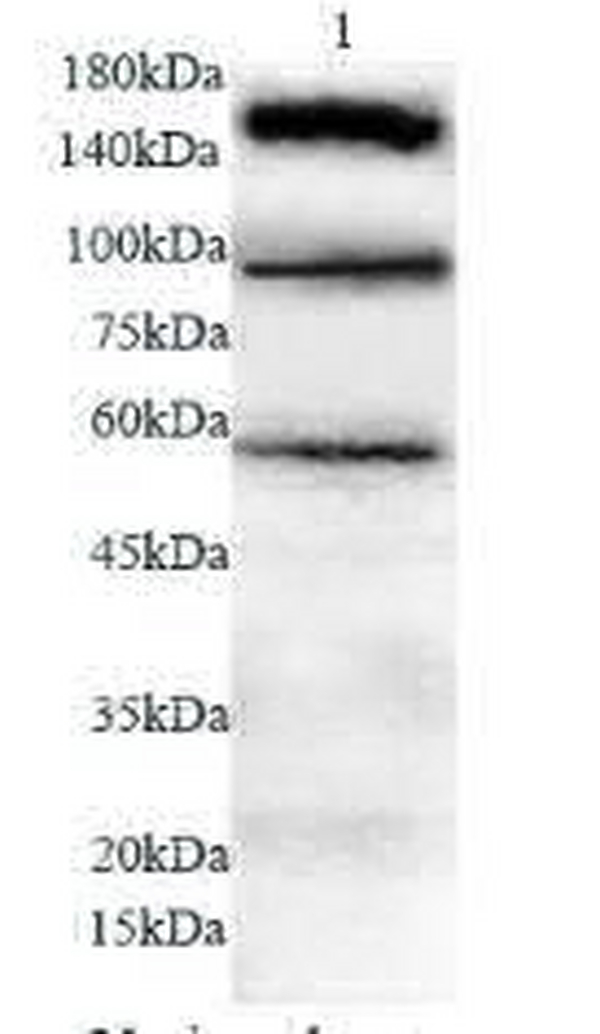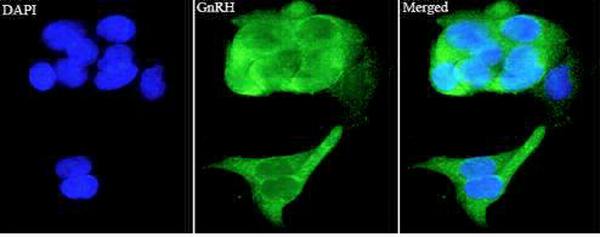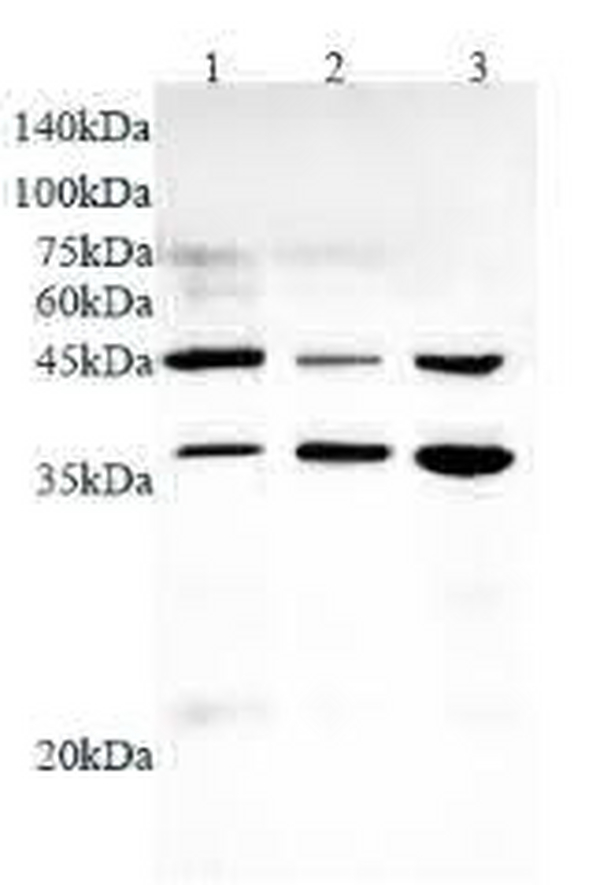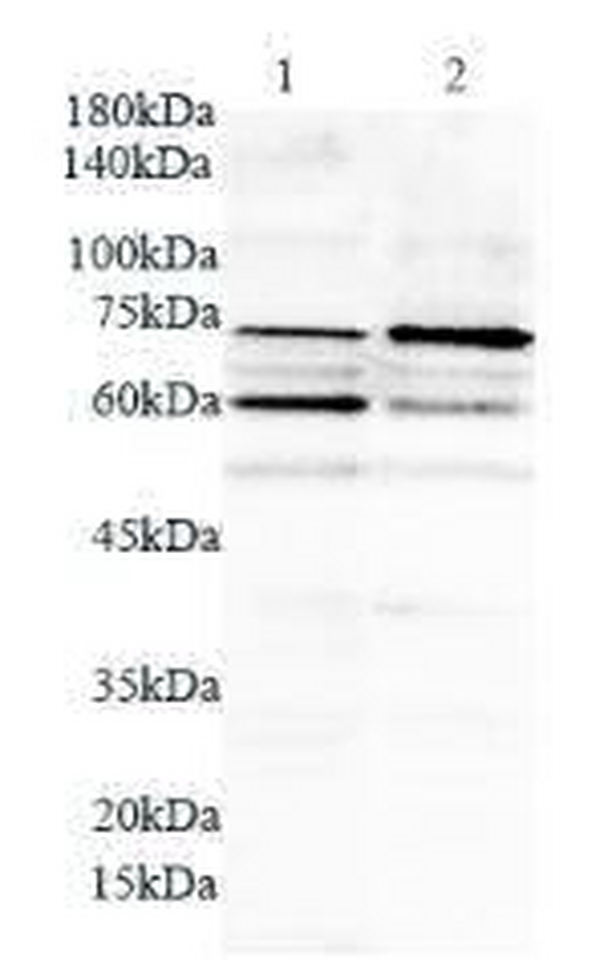QQ:3002763590


客服电话:021-61998208
Anti ANXA2 polyclonal antibody
ANXA2抗体
Anti ANXA2 polyclonal antibodyAnnexin A2 (ANXA2), also named Annexin-2 or Lipocortin II, is a Ca2+ binding protein that is up-regulated in virally transformed cell lines and human tumors. This calcium-regulated membrane-binding protein, whose affinity for calcium is greatly enhanced by anionic phospholipids, may cross-link plasma membrane phospholipids with actin and the cytoskeleton and be involved with exocytosis. Heat-stress response may also involve Annexin-2.
Anti NOX4 polyclonal antibody
NOX4抗体
Anti NOX4 polyclonal antibodyNOX4 (NADPH oxidase 4) is a phagocyte-type oxidase, similar to that responsible for the production of large amounts of reactive oxygen species (ROS) in neutrophil granulocytes with resultant antimicrobial activity and it has been postulated to function in the kidney as an oxygen sensor that regulates the synthesis of erythropoietin in the renal cortex. NOX4 has some isoforms and the molecular weight are 7KDa,26-32KDa,58-67KDa,75-80KDa(PMID:11728818).
Anti ANGPT1 polyclonal antibody
ANGPT1抗体
Anti ANGPT1 polyclonal antibodyAngiopoietin 1 is a 70-kDa secreted glycoprotein synthesized in pericytes.(PMID: 19786610). It plays a critical role in mediating reciprocal interactions between the endothelium and surrounding matrix and mesenchyme and inhibits endothelial permeability. The protein also contributes to blood vessel maturation and stability, and may be involved in early development of the heart. Angiopoietin 1 is fundamental to physiological angiogenesis, including endothelial cell survival, vascular branching, and pericyte recruitment. ANGPT1 binds to and activates the TEK/TIE2 receptor by inducing its dimerization and tyrosine phosphorylation, playing an important role in the regulation of angiogenesis. Overexpression of ANGPT1 has been proven to occur in malignant glioblastoma, neuroblastoma, non-small cell lung cancer, and other tumors.
Anti CD73 polyclonal antibody
CD73抗体
Anti CD73 polyclonal antibodyNT5E(5'-nucleotidase) is also named as NT5, NTE,CD73,ecto-5'-nucleotidase, and belongs to the 5'-nucleotidase family. It catalyzes the conversion at neutral pH of purine 5-prime mononucleotides to nucleosides, the preferred substrate being AMP.The enzyme occurs mainly as a dimer and the wide distribution of NT5E in the rat hippocampus, suggesting their involvement in the control of the purinergic signaling(PMID:17619139). This protein has two isoforms with the molecular weight of 63 kDa and 58 kDa and four glycosylation sites with a signalpeptide. It can exsit as a dimer(PMID:17619139). It can be detected the band of 55 kDa,64 kDa, 70 kDa, 110 kDa by western blot(PMID:17619139,12370277,21533188). Defects in NT5E are the cause of calcification of joints and arteries (CALJA).
Anti GDF9 polyclonal antibody
GDF9抗体
Anti GDF9 polyclonal antibodyGrowth factors synthesized by ovarian somatic cells directly affect oocyte growth and function. Growth differentiation factor-9 (GDF9) is expressed in oocytes and is thought to be required for ovarian folliculogenesis. GDF9 is a member of the transforming growth factor-beta superfamily. [provided by RefSeq, Jul 2008]
Anti ISR polyclonal antibody
ISR抗体
Anti ISR polyclonal antibodyThe biological effects of insulin are mediated by a membrane spanning cell surface receptor that has been shown to consist of disulfide-linked 135-kDa and 95-kDa alpha- and beta-subunits that are cleaved products of a common precursor. Binding of insulin to the receptor extracellular domain results in intracellular activation of a tyrosine-specific kinase activity and the generation of signals that determine the cellular response (PMID: 2369896). This antibody raised against 980-1382aa of human insulin receptor can recognize full-length insulin receptor precursor and insulin receptor beta subunit.
Anti GnRH1 polyclonal antibody
GnRH1抗体
Anti GnRH1 polyclonal antibodyThe protein encoded by this gene is secreted and then cleaved to form the 10 aa luteinizing hormone-releasing hormone (LHRH, also known as gonadoliberin-1), and prolactin release-inhibiting factor (also known as GnRH-associated peptide 1). LHRH stimulates the release of luteinizing and follicle stimulating hormones, which are important for reproduction. Mutation in this gene are associated with hypogonadotropic hypogonadism. Alternatively spliced transcript variants have been described for this gene. [provided by RefSeq, Jul 2012].
Anti WNT5A polyclonal antibody
WNT5A抗体
Anti WNT5A polyclonal antibodyThe WNT gene family consists of structurally related genes which encode secreted signaling proteins. There are 19 Wnt genes in the human genome that encode functionally distinct Wnt proteins. These proteins have been implicated in oncogenesis and in several developmental processes, including regulation of cell fate and patterning during embryogenesis. Wnt members bind to the Frizzled family of seven-pass transmembrane proteins and activate several signaling pathway. Wnt5A is a member of the Wnt family of proteins, which are 38–45 kDa secreted cysteine-rich proteins with hydrophobic signal peptidesThis antibody can recognize WNT5A and WNT5B.
Anti PML polyclonal antibody
PML抗体
Anti PML polyclonal antibodyPML, also named as MYL, RNF71 and TRIM19, is a member of RBCC/TRIM family of proteins that possess a RING finger domain, B-box, and coiled-coil domain. It functions as tumor suppressor. PML is required for normal, caspase-dependent apoptosis in response to DNA damage, FAS, TNF, or interferons. It plays a role in transcription regulation, DNA damage response, DNA repair and chromatin organization. PML plays a role in processes regulated by retinoic acid, regulation of cell division, terminal differentiation of myeloid precursor cells and differentiation of neural progenitor cells. It regulates PTEN compartmentalization through the inhibition of USP7-mediated deubiquitinylation. A large number of alternative spliced transcripts are synthesized from the PML gene, resulting in a variety of PML proteins ranging in molecular weight from 48-97 kDa (PMID:11704850). And it can be detected as 70-130 kDa or larger due to the modification (especially SUMO) (PMID: 167781
最新动态
-
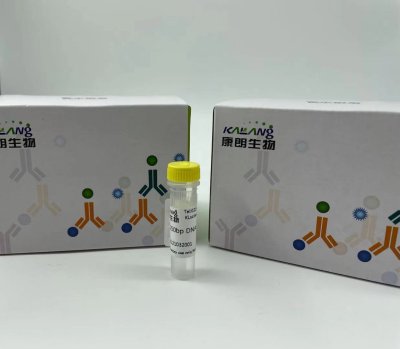
Anti-GNGT1 KL20092-001(50ul)
2021-10-11 -

Anti-GNGT1 antibody(50ul) KL20093-001
2021-10-11 -
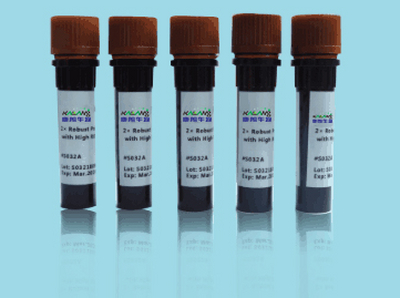
MUC5AC (PT2058) mouse Monoclonal Antibody
2021-01-06 -

mOrange mouse Monoclonal Antibody(Mix)
2021-01-05
热门标签
- Histone H3 rabbit Polyclonal Antibody Histone H3抗体
- EGFR rabbit Polyclonal Antibody EGFR抗体
- Cy3 Conjugated
- AbFluor™ 555 Conjugated
- AbFluor™ 680 Conjugated
- AbFluor™ 350 Conjugated
- AbFluor™ 647 Conjugated
- AbFluor™ 594 Conjugated
- AbFluor™ 405 Conjugated
- Cy5 Conjugated
- AbFluor™ 488 Conjugated
- Cyclophilin B抗体 Cyclophilin B Monoclonal Antibody(2B10)
- COX IV抗体 COX IV Monoclonal Antibody(6C8)
- PCNA抗体 PCNA Monoclonal Antibody(12D10)
- FAK rabbit Polyclonal Antibody FAK抗体
邮箱:3002763590@qq.com
电话:021-61998208

扫码关注微信公众号



